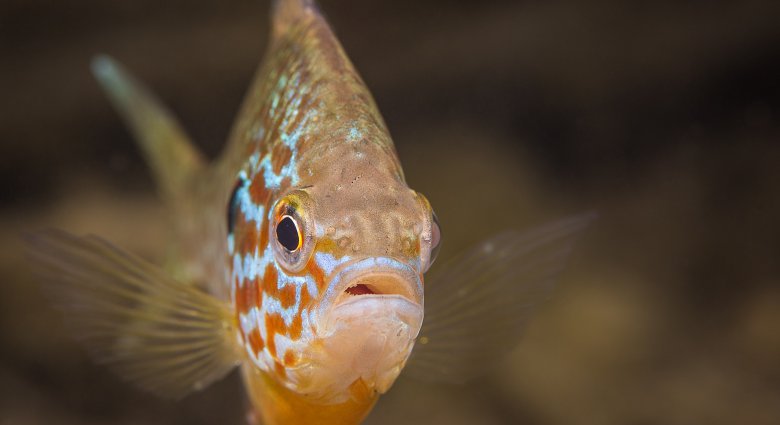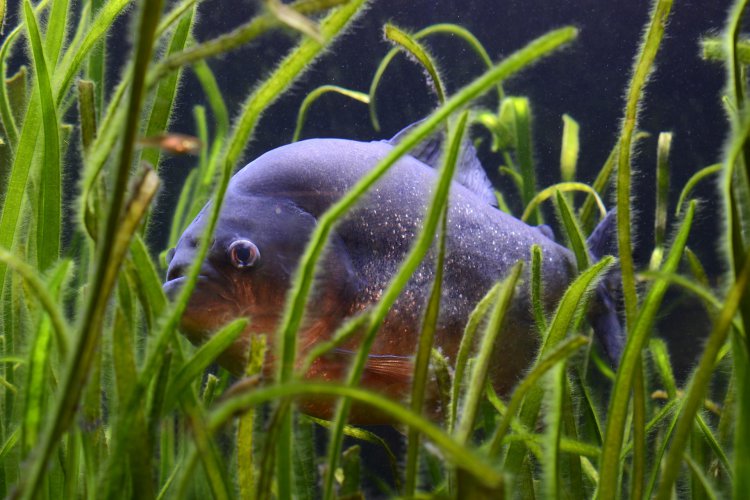
SPOTTED FISH OR HOW TO TREAT SMALLPOX WITH FISH
Smallpox (Ichthyophyriasis) is caused by a parasite (pericardium) which settles on the skin and gills of the infected fish. The parasite can be seen with the naked eye. This disease is very popular, often found in aquarium fish. Fortunately, it is relatively easy to cure, provided that it is intervened quickly.
FISHERIES TRADE
In order to successfully cure fish from this disease, it is necessary to learn about the developmental cycle of the parasite, which is responsible for smallpox. This knowledge will help to work in a timely manner, so that there is a great chance of winning with a pest.
DEVELOPMENT CYCLE:
The parasite feeds on fish cells, grows and reaches a diameter of about 0.5 - 1 mm. (whitish dots on the skin of infected fish). In order for the treatment to be effective, it should be taken no later than 3 days after the appearance of the rash. Afterwards, the parasite, transformed into a developmental cyst, leaves the fish and attaches itself to the aquarium plants, the aquarium glass, or falls to the bottom of the tank, or floats on the water. A cystic parasite is resistant to medication.
Inside of the cyst, progeny parasites, so-called floats, multiply, which drop it and look for another host. The ability to attack can last from 10 hours to 3 days. If the tide does not find a new prey during this time, it sinks to the bottom and dies. At this stage, the parasite (float) is the most susceptible to chemotherapy.
SMALLPOX - TEMPERATURE TREATMENT
Examples:
- temperature: 25*C, the development cycle lasts 6 days - 5 days the parasite persists in fish, and then from 0.5 to 1 day it appears as a tide;
- temperature: 30*C, the developmental cycle is stopped, but parasites don't disappear!
- temperature: 32-34*C, the parasite dies very quickly, it takes several hours (some strains can survive)
PREPARATION:
It is believed that the embryos of the parasite are still in our reservoirs, but only those fish with reduced immunity are infected. That is why it is recommended to constantly take care of good conditions in aquariums and to use quarantine for new fish, plants or snails - see the article "Quarantine".
The principle "Prevention is better than cure" should be followed. Factors that affect the resistance of fish should be avoided. Even the best treatment can be ineffective if the fish are still in an unfavourable environment.
FACTORS CONDUCIVE TO THE DEVELOPMENT OF THE DISEASE:
- rapid drops in temperature
- fluctuations in water ph
- too little oxygen in the water
- transport stress
- stress related to more males
- excessive concentration of fish
- bad karma
- disastrous sanitary conditions in the aquarium
- use of live food

SMALLPOX - SYMPTOMS
First stage (before rash)
- Fish swim with folded fins, rub against decorations, do not eat
- they are not very floating, shy and apathetic
- are at the heater and under the stream of water. They also have an accelerated breath, so they are under the surface of the water.
Second stage (final)
- white dots 0.2-1 mm in size are visible to the naked eye on the skin of the fish. There are many of them.
It is worth noting here that not every dot on the fish body must mark smallpox. Single dots (usually at the ends of fins, tails or muzzle of fish) may indicate the presence of e.g. sporowców, while very numerous dots, resembling powder (invisible as much as smallpox) may indicate oodinosis.
FISH SMALLPOX - SALT TREATMENT
Pour water into a separate tank, without substrate or plants. The water must be well aerated and filtered. We do not feed fish. We leave the tank where the sick fish stayed without fish for about 10 days, without aeration, but we filter. All fish, even those without visible spots, should be treated.
Treatment temperature:
Therapeutic reservoir - water at the temperature of 28-29°C and preferably 33°C.
General reservoir - water at the temperature of 33-35 degrees Celsius. Crustacean plants may not withstand this temperature. You can add to the water kitchen salt (1 tablespoon/10 l of water) or methyl blue (according to the manufacturer's recommendations).
SMALLPOX - TREATMENT IN A COMMUNITY AQUARIUM
1 method of treatment should last about 2-3 weeks, we administer drugs according to the manufacturer's recommendations, temperature: 28-29*C
2 method (fish and plants may not survive): raise the temperature to 32-33*C, add aquarium salt 1g/1L of water, the parasite dies in a few hours.
After the end of the treatment we replace 50% of the water in the aquarium. If salt was used for treatment every day, we change 20% of the water for a few days.
SMALLPOX - HOW TO TREAT IT?
- FMC ZOOLEK, CMF (MFC) TROPICAL: consist of malachite green, methylene blue and formalin - common drugs for smallpox.
- Costapur sera: consists mainly of malachite greenery.
- Ichtiosan TROPICAL: consists mainly of malachite greenery.
- Methylene Blue ZOOLEK
- kitchen salt (not coded!)
PARASITE STRAINS RESISTANT TO TREATMENT:
(when the treatment has failed)
Treatment in a separate tank:
- 1 DAY: we give 10-15% higher dose of the preparation than recommended by the manufacturer, we maintain the temperature of 33*C for at least 10 hours, we aerate the water very strongly!
- 2 DAY: lower the temperature to 27-28*C
- 3 DAY: exchange 50-70% water and add 50% of the drug dose
- 4 DAY: repeat day 1 activity
- 5 DAY: break
- 6 DAY: repeat day 3 activities
- 7 DAY: break
- 8 DAY: repeat day 1 activity
- 9 DAY: break
- 10 - 15 DAY: every day we exchange 20% of the water for fresh water.
- 16 DAY: the water is filtered through active carbon, it is possible to use a UV lamp, temperature 28-29*C for the next 7 days.
- 23 DAY: transfer fish to the general aquarium
View

The Do’s And Don’t’s Of Livestock Water Troughs

The process of domestication of horses






























